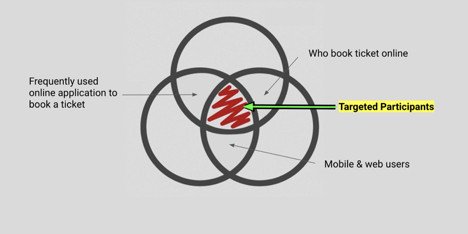When is Usability Testing most efficient?
Stakeholders also need to understand the user mindset. A product serves a specific purpose, but there may be many paths to get there. Usability testing helps to understand these paths to optimize and improve user satisfaction.
The shortest path to a product’s successful usage may differ from the one its owners intended to be. This type of testing can help identify how quickly a user can accomplish tasks.
Top things to keep in mind before conducting a Usability test:
There are several ways to do a usability test. However, theory often contradicts practical know-how. I have often found that while a usability test may be reasonably straightforward, several intriguing knowledge bytes are most visible in practice.
Here are 7 steps to follow while performing Usability Testing.
Select a tool
While there are many tools available in the market, analyze each tool and its features to ensure that they meet the specific need of the test.
Find your users
User discovery is critical since finding the right users can help you get accurate feedback. Creating personas and then surveys matching those personas helps discover valid users. Several tools such as Respondent.io, SurveyMonkey, Usertesting.com can assist in executing the surveys.
Here is an example of how you can try to find out your users:

Curate Scenarios & Tasks
Scenarios. This includes writing elaborative scenes to help the participants better understand their tasks.
Tasks. These are tasks that cover the majority of the functional use cases for the application under test. Each test has limited tasks to prevent loss of interest by participants and is not repetitive. Tasks are also broken down into sub-tasks. For example, if the application contains 10 functionalities, it is prudent to divide tasks across two tests.
Pre and Post Questionnaire
A pre- and post-activity questionnaire with not more than 4-5 questions helps to understand the participants’ approach towards the application use.
Collect Evidence
It is essential that users know what they are doing and that the data collected from them will be used for later analysis. Hence explicit user consent along with a log of all the evidence of their work is mandatory.
A compilation of all the observations is also necessary for compiling the test findings for the stakeholders. These observations include user expressions, behavior on the screen, etc.
Before beginning the test
A few guidelines ensure that participants are up to speed on what they are required to do, ensures the success of your test. These include:
- Make all participants comfortable
- Get a consent form signed to make sure the participant agrees with rules and regulations to follow
- Give a scenario and Task sheet to the participant and let them understand what they need to do
- Start recording participants expressions and behavior during an activity
- Start the test
- Note down all observations
After the test is concluded
- Save participants’ work and clear the browser history
- Cross-check all the notes with observer’s notes and recordings
- Administer a “post-activity” question sheet to the participants
- Reward the participants
A few simple Do’s and Dont’s
These do’s and dont’s help the developers, participants, and stakeholders reach specific goals while conducting the test.
Do’s
- Explain to the participant the goal of the test
- Be open to conversations
- Ask open-ended questions
- Provide open-ended hints only when asked:
- Do you see something that will help you?
- What are you thinking right now?
- Is there anything else you want to try?
- Where would you go?
- What did you expect to happen?
- You seemed surprised or frustrated…?
- Exactly how did that differ from what you expected to happen?
- Would you expect that information to be provided?
- Take notes which can be useful as takeaways
Dont’s
- Avoid providing any direction or suggestion to the participant on how to accomplish the task
- Do not offer approval or disapproval with words, facial expressions or body language
- Don’t crowd the participant physically; allow the participant to move, take a break or quit
- Abstain from taking notes only when the participant does something interesting
- Don’t make a sound of your keyboard or pen consistently that might give clues to the participant
Find out more about our UI and UX practice.



